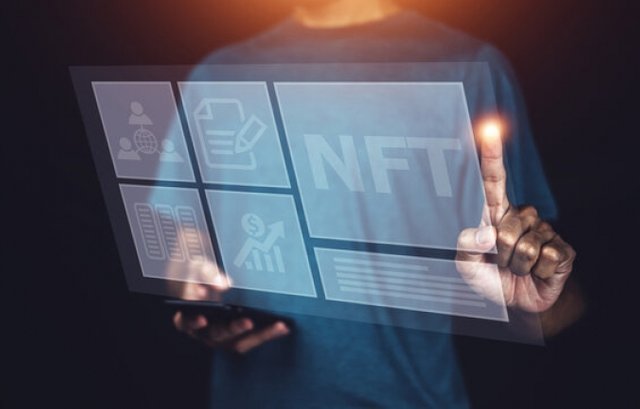
The concept of ownership is expanding beyond physical objects. Non-Fungible Tokens (NFTs) have emerged as a revolutionary technology that allows individuals to own unique digital assets securely. NFTs have gained significant traction in recent years, attracting artists, collectors, and investors alike. This article explores the fascinating world of NFT marketplace development process, and the opportunities they present.
What are NFTs?
NFTs, or Non-Fungible Tokens, are unique digital assets that represent ownership of a particular item or piece of content. Unlike cryptocurrencies such as Bitcoin or Ethereum, which are fungible and can be exchanged on a one-to-one basis, NFTs cannot be exchanged on a like-for-like basis. Each NFT possesses distinct attributes, making it one-of-a-kind.
How do NFTs work?
NFTs are built on blockchain technology, most commonly the Ethereum blockchain. They leverage smart contracts, which are self-executing agreements that store ownership information and facilitate transactions. Each NFT contains a unique token identifier, verifying its authenticity and ownership.
Benefits of NFTs
NFTs offer several advantages over traditional forms of ownership. They provide provenance and transparency, ensuring that the history and origin of digital assets can be easily traced. NFTs also enable artists to monetize their work directly, without intermediaries, and create new revenue streams. Additionally, collectors benefit from the ability to own and trade rare and unique digital items.
Exploring NFT Marketplaces
Definition and Functionality
NFT marketplaces serve as platforms where users can discover, buy, sell, and trade NFTs. These marketplaces provide a centralized hub for artists, creators, collectors, and investors to connect and engage in transactions. NFT marketplaces often incorporate features such as search filters, categorization, bidding systems, and community forums.
NFT Marketplace Development
Technical Infrastructure
Developing an NFT marketplace requires a solid technical infrastructure. It involves setting up servers, databases, and storage solutions to handle the large volume of digital assets and user interactions. Scalability, performance, and security are critical aspects that need careful consideration.
Smart Contract Integration
Smart contracts play a vital role in NFT marketplace development. They define the rules, ownership rights, and transfer mechanisms for NFTs. Solidity, a programming language used on the Ethereum blockchain, is commonly employed for smart contract development. Thorough testing and auditing of smart contracts are essential to ensure their security and functionality.
User Authentication and Security
User authentication mechanisms, such as email verification and two-factor authentication (2FA), are essential to secure user accounts. Robust security measures, including encryption and regular security audits, protect user data and digital assets. Implementing secure wallets and private key management solutions is crucial to prevent unauthorized access.
Payment Gateways and Tokenization
Integrating payment gateways enables users to transact with cryptocurrencies or traditional fiat currencies. Tokenization allows the fractional ownership of high-value assets, providing accessibility to a broader audience. Implementing multiple payment options and ensuring smooth payment processes are key factors for a successful NFT marketplace.
Creating a Seamless User Interface
User interface (UI) and user experience (UX) design significantly impact the success of an NFT marketplace. A well-designed UI/UX enhances engagement and encourages users to explore, buy, and sell NFTs. Intuitive navigation, clear asset information, and personalized recommendations contribute to a delightful user experience.
Key Considerations for NFT Marketplace Development
Scalability and Blockchain Selection
Choosing a suitable blockchain infrastructure is critical for scalability and transaction speed. Ethereum, despite its popularity, has faced challenges with high gas fees and network congestion. Exploring alternative blockchains or layer-two solutions can help address scalability concerns.
Gas Fees and Transaction Speeds
Gas fees, the transaction fees associated with Ethereum, have been a subject of concern. Higher gas fees can deter users from engaging in transactions. Evaluating gas optimization techniques and exploring blockchain solutions with lower fees can enhance the user experience.
Community and Governance
Building a vibrant community around an NFT marketplace is essential for its success. Incorporating governance mechanisms that give users a voice in decision-making and platform improvements fosters trust and loyalty. Community-driven initiatives, such as curation programs and collaborative projects, contribute to a thriving ecosystem.
Intellectual Property Rights
Navigating intellectual property rights within the realm of NFTs can be complex. Artists and creators need clear guidelines and protections to ensure their work is not plagiarized or used without permission. Implementing mechanisms to verify authenticity and protect intellectual property rights is crucial for maintaining trust within the marketplace.
Legal and Regulatory Compliance
As the NFT ecosystem evolves, legal and regulatory frameworks are still being established. NFT marketplaces must adhere to applicable laws, such as those related to data protection, copyright, and financial regulations. Staying informed about emerging regulations and seeking legal guidance is essential for long-term viability.
The Future of NFT Marketplaces
Integration with Virtual Reality (VR)
The integration of NFT marketplaces with virtual reality environments holds immense potential. Users may have the opportunity to explore virtual galleries, display their NFT collections, and participate in immersive experiences. VR integration adds a new dimension to the NFT marketplace experience, enhancing engagement and value.
Fractionalized Ownership
Fractionalized ownership enables users to own a fraction of an NFT, making high-value assets more accessible. Fractionalization platforms and secondary marketplaces dedicated to fractional ownership are emerging, opening up new investment opportunities for a broader audience.
Cross-Chain Compatibility
Achieving cross-chain compatibility allows NFTs to move seamlessly between different blockchain networks. This interoperability enables broader exposure, liquidity, and eliminates the restrictions imposed by being limited to a single blockchain ecosystem.
Gaming and Metaverse Integration
NFTs have a natural affinity with the gaming industry. Integrating NFT marketplaces with gaming platforms allows for the trading and ownership of in-game assets. As the concept of the metaverse gains traction, NFT marketplaces will play a vital role in facilitating the exchange of virtual assets within these immersive digital worlds.
Conclusion
NFT marketplaces have revolutionized the digital ownership landscape, enabling individuals to own unique digital assets securely. Through this article, we have explored the intricacies of NFT marketplace development process, and the considerations involved. As technology advances and creative possibilities expand, NFT marketplaces will continue to evolve, opening up new frontiers for artists, collectors, and enthusiasts.